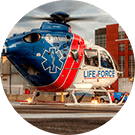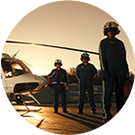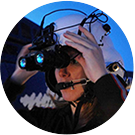Hope, against all odds, against conventional wisdom, and even, at times, against all medical consensus, is the great, human motivator to persevere. Often, where there is hope, there is, quite literally, life. On January 9, 2021, it was hope, and the skill of first responders and hospital staff, that saved the life of three-year-old Brody Drumheller.
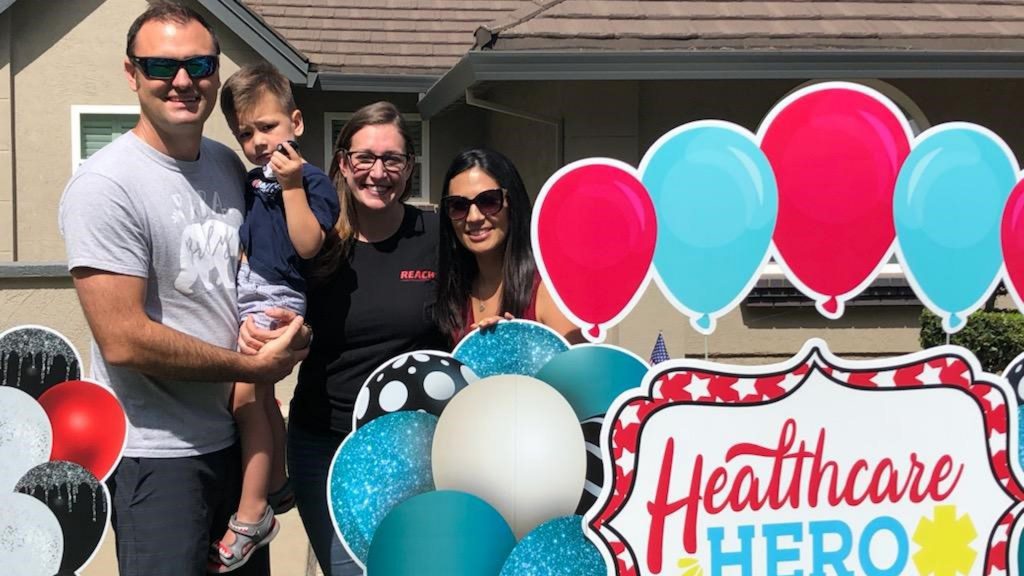
On a cold day in the northern California town of Yuba, Brody’s father, Andrew, lived the nightmare scenario that haunts any parent. He found his son in the backyard pool, floating face down. Andrew plunged into the water, pulling Brody’s small, fragile, lifeless body to the side, and rushed him to the house. The little boy wasn’t breathing.
Brody’s mother, Nicole, hearing frantic banging on the back door, felt the surge of panic and dread that accompanies the sure knowledge that something terrible has happened. Opening the door and seeing her husband with Brody limp in his arms, both soaked through, her instinct and worst fears were confirmed. In the face of such a tragic scene, it might have been natural to shut down, overwhelmed by hopelessness, helplessness, and grief. Instead, the Drumhellers sprang into action.
Resuscitation Efforts
Nicole called 911 while Andrew began CPR. Later, Nicole would tell the local newspaper, the Appeal Democrat, “it was a complete out-of-body experience. People say they blackout, and I think it’s a natural body response when you induce that type of trauma.”
Within five minutes, the local ground ambulance company was on the scene. By a stroke of luck, or guided by providence, the local crew was parked just down the road waiting for a call. This was outside of their normal routine. By the time EMS arrived, a neighbor, who is a practicing physician, had joined Andrew in his CPR efforts. Taking over, the crew briefly established a heartbeat, and Brody was rushed to nearby Adventist Health Rideout. But the little boy coded again.
At the hospital, as CPR continued, doctors knew that Brody would need treatment that their facility could not provide. He required advanced care available in Sacramento, more than an hour away by ground, even with sirens blaring. Not an option. The call went out for air medical transport.
Flight Guard and REACH 7 Respond
That day, Flight Coordinators Jason Hurst and Alex Turner were working communications and flight planning at Flight Guard, the dispatch hub for REACH Air Medical Services. It was busy, as usual. Just nine days into January, there already had been more than a thousand flights coordinated by the hub that month. The call from Yuba PD dispatch regarding Brody Drumheller came in at 1:17 p.m.
On every call, the critical task of flight coordinators is to facilitate the fastest possible response based on ever-changing variables: available aircraft, their distance from the scene, even weather. For the Drumheller call, Hurst and Turner quickly assessed the possible responding aircraft and crews. After checking down the options, a crew from REACH 7 out of Marysville, Calif., was available. Just returning from a previous call, the aircraft was quickly refueled for the short flight to Yuba. It was 1:27 p.m.
Pilot Jeremy Makin took off into the crisp but clear afternoon skies. With him were the experienced medical team of Elise Kennedy-RN and Kristin Reed-RN, both Flight Nurses. At this time, they were all unaware of the specific medical details of the trip beyond the basic information provided: Drowning victim, child, get to Yuba stat, and then on to the receiving hospital in Sacramento.
Hope in the Face of Daunting Odds
Between the efforts of his father and neighbor, EMS, and the Adventist staff, Brody had been undergoing CPR for more than an hour and 20 minutes. He’d been given 18 rounds of epinephrine, a medication that stimulates the heart. Just as the REACH 7 crew arrived, the doctors achieved a return of spontaneous circulation (ROSC) and were able to ventilate Brody to help him breathe. But the little boy wasn’t out of the woods, yet.
“Your brain starts to die after just four minutes of no oxygen,” his mother told the Appeal Democrat. “When you put it in perspective just how long he went without oxygen, the prognosis wasn’t good.”
The receiving doctor at Sutter Medical Center, Sacramento, seemed to share that outlook. While Kennedy waited in the ER for clearance from attending physicians to move Brody once sufficiently stabilized, Reed had called Sutter to get any clinical instructions for in-flight treatment. But the anoxic brain injury Brody had suffered through a lack of oxygen was causing his organs to shut down, his body temperature was critically low from hypothermia and his vitals were nearly non-existent. “Do the best you can,” Reed was told.
The dire outlook was based on medical experience. In a 2015 study published in the British Medical Journal, survival rates for drowned children with cardiac arrest and hypothermia after 60 minutes of CPR were about 11 percent. All of the survivors in that study had various degrees of lost brain function and incapacitation. Brody had been undergoing resuscitation for 82 minutes.
Back in the ER, Kennedy was determined not to lose hope. She looked around and saw all the medical staff working tirelessly on the little boy, his parents, and grandmother, a nurse herself, looking on afraid but determined, as well. “We treat all patients the same,” said Kennedy. “But there is an emotional component when the patient is a child that brings everyone together.”
There was something about the way Brody was responding that kept hope alive for both Kennedy and Reed. In their experience with REACH and in ER roles as registered nurses, they had seen their share of catastrophic brain injuries. Usually, there was no hope for a return of brain activity. But in Brody’s tiny body fighting for life, something was different. There was something there.
In-Flight Treatment
Cleared to leave with their young patient, Kennedy and Reed situated Brody on the aircraft as Makin took off north. Sutter was less than 20 minutes away, and seconds could mean the difference between life and death. The engines roared and rotors turned, leaving Adventist a vanishing point on the horizon behind.
In the air, the nurses kept their little patient on a respirator. He was not totally unresponsive, a good sign, but it made it difficult to keep him intubated as his body fought to breathe on its own. There was also water in his lungs and a very real possibility that he might code again necessitating further CPR. Kennedy and Reed optimized the ventilator settings based on their patient’s condition and adjusted Brody’s intravenous medication to facilitate the intubation and to stop his body from rejecting the air tube.
Now, another dilemma: The boy’s body temperature was dangerously low. However, a cold body temperature can also protect the brain from further injury. Should the nurses warm him up? With no specific guidance on this point from the receiving physician, Kennedy and Reed decided to keep Brody at the temperature he had when boarding the aircraft.
Now, Sutter appeared before them. Makin touched down on the helipad about 15 minutes after leaving Rideout. While moving Brody to the Sutter Pediatric Intensive Care Unit (PICU), the flight nurses saw a spontaneous twitch of Brody’s leg. This was another good sign of brain function and hope was kindled again.
Against All Odds but Not Against All Hope
Still, the prognosis was bad. The receiving physician felt that the potential for Brody to remain in a vegetative state if he survived at all, was high. The Sutter staff began aggressive treatment trying to elicit a response. They inserted a large IV to help administer life-saving medications. They, too, had now seen the leg twitch and worked furiously to save the little boy. Brody, himself, was fighting, too.
The next day, the medications that kept Brody sedated and unconscious were turned off. It was the moment of truth. Brody was alive, but had he lost significant cognitive function? Had he proved correct those foreboding statistics in the British Medical Journal?
Slowly, his eyes opened and he looked around the room. Doctors conducted a basic exam to see if Brody responded to commands. He did. Further tests showed that he had lost significant motor control: the ability to speak or eat without a feeding tube. But this was just one more improbable hurdle for the little boy to clear.
After three weeks in the Sutter PICU, Brody was transported to Shriner’s Hospital for Children in Sacramento to begin intensive rehabilitation: physical, occupational, and speech therapy. His parents sought out specialists across the country and progress was made more quickly than anyone could have hoped for. His mother created a special Facebook page so others could follow Brody’s recovery. REACH’s Elise Kennedy was a frequent visitor to the site and she shared updates with her team.
Fast forward five months. A party to celebrate Brody’s full recovery. The Drumhellers invite all of the EMS and medical teams that made the festivity possible. There in the warming sun of May, running and playing, talking in the breathless way of three-year-olds and eating his share of goodies, was a little boy the odds said should not be there at all.
“We still can’t get a grip over what happened to us,” said Nicole Drumheller. “We’ve relied on our faith to keep us going. That’s what has gotten him to where he is today.”
Faith and hope. As Kennedy added: “There is always hope. People doing their best, doing the right work at the right time, can achieve some pretty amazing outcomes. You can never give up.”
Brody certainly never did.
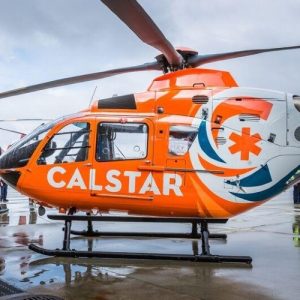
Breaking Down Air Medical Transport Cost and Membership
When people hear about the price of an air medical transport cost, it’s common to experience sticker shock. A single air ambulance call can cost
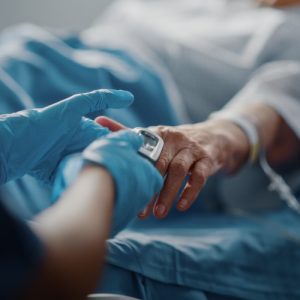
How Air Ambulances Can Help Reduce Emergency Room Wait Times
Patient experience in healthcare has been a hot topic for the past 20 years. Studies show that when patients are happier with their care, they

Holiday Gifting for the Family That Has Everything: Unique Gifts They’ll Truly Appreciate
Finding the perfect gift for a family that seems to have it all can feel nearly impossible. They already own the latest gadgets, their home


